6.4 /10 1 Votes
Created by Bert Claster Narrated by Various (see below) Running time 22–24 minutes | 6.4/10 IMDb Presented by Various (see below) Country of origin United States Final episode date February 2008 | |||||||||||||||||||||||||||||||||
Similar | ||||||||||||||||||||||||||||||||||
Flashback bowling for dollars
Bowling for Dollars was a television game show on which people could play the sport of bowling to win cash and sometimes prizes based on how well they bowled.
Contents
- Flashback bowling for dollars
- Matt on bowling for dollars
- The show
- Gameplay
- Prizes
- Pin Pals
- Local editions
- Baltimore
- Boston
- Buffalo
- Cincinnati
- Cleveland
- Columbus OH
- DallasFort Worth
- Dayton OH
- Detroit
- Flint MI
- Honolulu Hawaii
- Kansas City
- Kitchener ON
- Los Angeles
- Milwaukee
- MinneapolisSt Paul
- New York
- Philadelphia
- Pittsburgh
- Rochester
- St Louis
- Syracuse
- TampaSt Petersburg
- Washington DC
- Winnipeg Manitoba Canada
- References
Unlike most TV game shows of the time, which were taped in New York or Hollywood and broadcast nationally, Bowling for Dollars was produced by local TV stations and featured contestants from the immediate area. The show was actually a franchise, created by Bert Claster of Claster Television, also the creator of Romper Room. Episodes of Bowling for Dollars were taped either in a local bowling alley, or on a pair of bowling lanes constructed right inside the TV studio.
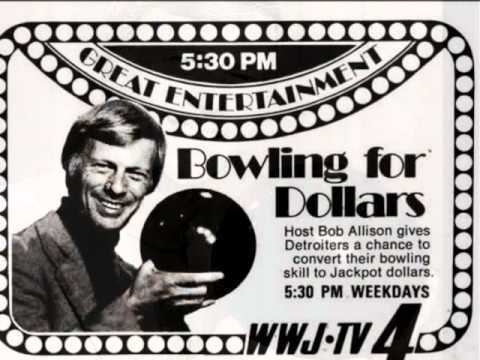
The show reached its heyday in the 1970s. The most recent station to air the format was Detroit, Michigan independent station WADL, which relaunched Bowling for Dollars in September 2013.
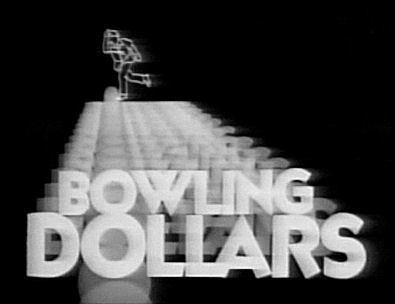
Matt on bowling for dollars
The show
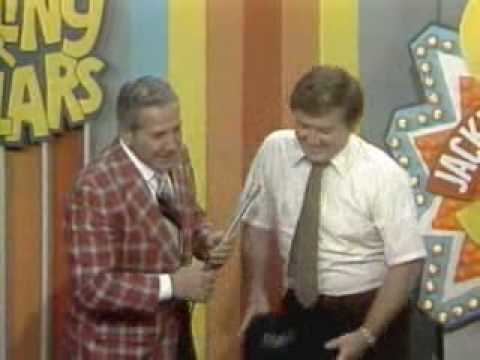
The show's main set consisted of a sliding door from which the host emerged, as did the contestants, one-by-one. There was also a Jackpot light with a numeric display of its value, and a Pin Pal container (see below). There were also stands set up for an audience.
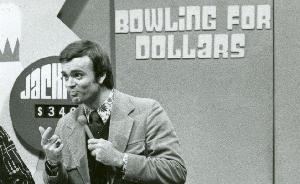
Local editions may have varied, but there were two musical themes used. One was a custom theme for the show's opening and close (with a short phrase to introduce each contestant). The other was played when a contestant hit the jackpot, also used for commercial bumper music in some editions. The latter was an instrumental version of "Keep the Ball Rollin'" by Al Hirt, a song originally done by Jay & the Techniques.
Gameplay
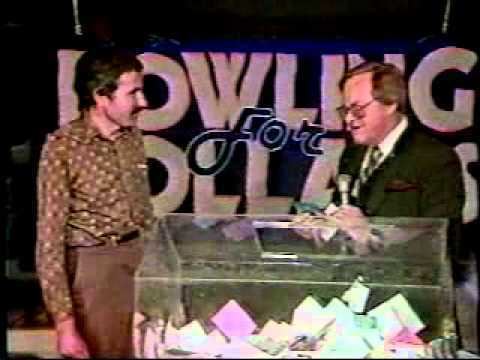
As each contestant appeared, the host would interview him or her for a couple of minutes. Then the audience camera would cue as the contestant pointed out who he brought along ("There's my wife Paula, there's my son Nick..."). The contestant was then instructed to pick a Pin Pal out of a container filled with postcards sent in by home viewers, then went off to the lanes where they would bowl at least two balls.
A half-hour show had seven contestants.
Prizes
Each contestant received one dollar for each pin knocked down (e.g., a contestant who knocked down a total of eight pins won $8, though some versions may have had a $5 minimum for less than five pins). A Strike or Spare awarded $20. The real allure of the show was the Jackpot, which was awarded to any bowler who got two consecutive Strikes. The jackpot started at $200, $300, or $500 (depending on the version) and was increased by $20 each time it was not hit.
Some versions of Bowling for Dollars awarded prizes in addition to the money. In the Detroit edition of the show, a contestant who got a spare won a dinner for two at a local restaurant. If that spare was a split, they would also get two large pies from Buddy's Pizza. If the contestant got only one strike, they got to pick a pin from a "pin board" for a prize from a local jeweler; one such prize was a genuine diamond ring. Finally, if a contestant did break the jackpot, he or she got to bowl one more time, and if that was a strike (a "turkey") they would receive yet another prize, such as a recliner chair or bicycle. The Los Angeles version awarded a portable television set for three consecutive strikes, and a car for four.
Pin Pals
Each contestant, just before approaching the bowling lane, was instructed to pick a postcard at random out of a large, horizontally mounted container. The name on the card was then read aloud by the host. These were Pin Pal cards, allowing a viewer at home to participate in the game on TV. Whatever the contestant won, the Pin Pal won also, although the jackpot may actually have been split between the two of them. Many people wrote clever messages on their Pin Pal cards, like "Strike it rich!" A Pin Pal was only eligible once per show, in case a Pin Pal tried to send an overwhelming number of postcards at one time.
Local editions
Bowling for Dollars was broadcast from TV stations serving medium to large communities all across the United States, Canada, and England.
Baltimore
There were two separate runs. Both aired on WBAL-TV:
Boston
This edition was titled Candlepins for Cash, featuring the regional candlepin variation of bowling, and had two separate runs:
Both editions only required contestants to make one strike for the jackpot — a significantly harder task in candlepin bowling than in standard tenpins. In the last two seasons of the show, the player would get $30 for a spare plus one bonus ball, worth $2 more per pin knocked down. When a person threw a 10-box (all pins knocked down on the third ball) they got $20 plus one bonus ball.
The 2006 show Candlepins For Dollars that aired on WLVI Channel 56 was not related to this format.
Buffalo
A revival of Bowling for Dollars aired between January and February 2008 on WGRZ, also hosted by Kilgore. This version, airing weekdays at 11:45 AM, was much shorter, with only one frame. It used a rotation of numerous theme songs, mostly from game shows from the 1970s.
A similar competing show, called Beat the Champ, aired on WBEN-TV during the original Channel 2 program run, hosted by Van Miller. This was one of two local-origination bowling programs on Channel 4 throughout the 1960s and 1970s, the other being a women's team-bowling program called Strikes, Spares & Misses hosted by Chuck Healy.
Cincinnati
Cleveland
Had two separate runs of Bowling for Dollars. Both used in-studio lanes.
Columbus, OH
Dallas/Fort Worth
Dayton, OH
The show aired Mon-Fri at 7:00 p.m.
Detroit
This was originally at Highland Lanes in Toledo, Ohio, where it was also seen on WDHO Channel 24 (now WNWO-TV). It moved to Detroit in about 1974. A revival of this show began in June 2013 on WADL, initially as a one-hour retrospective special, with a weekly half-hour series started in September. As with the original version, the WADL version is hosted by Bob Allison and originate from Thunderbowl Lanes.
Flint, MI
Honolulu, Hawaii
Kansas City
Kitchener, ON
Los Angeles
Milwaukee
1st station
2nd station
Minneapolis/St. Paul
New York
An infamous moment when bowler Mary Schmidt failed to knock over any pins has been cited as the moment Bowling for Dollars jumped the shark.
Host Larry Kenney later achieved national fame as the voice of Lion-O in the smash-hit 80s cartoon ThunderCats and the voice of Karate Kat in The Comic Strip.
Philadelphia
Pittsburgh
Rochester
St. Louis
Syracuse
The WSTM version was taped in the basement of the studios on James Street. The studios were also used for the taping of Challenge Bowling, a regional junior bowling show co-hosted by Marty Piraino.
